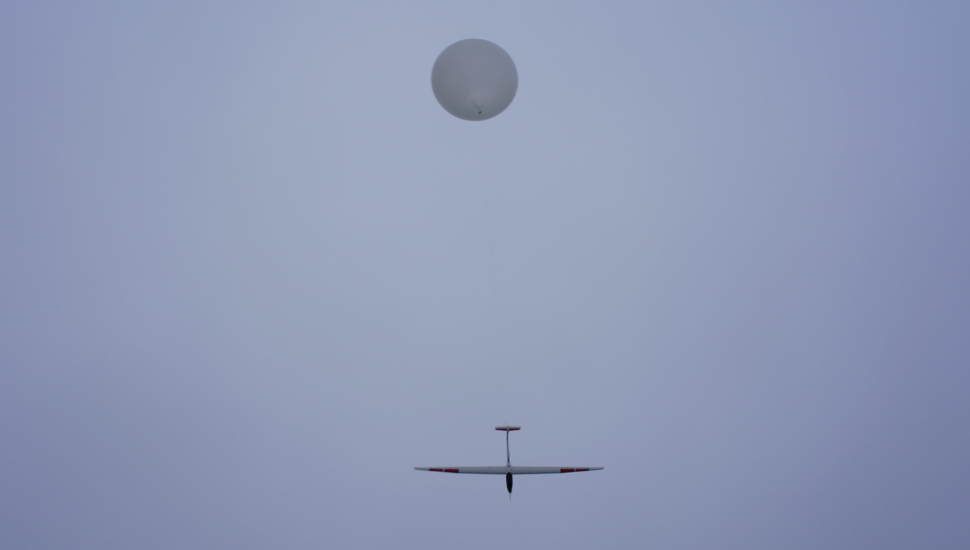After successfully carrying its Hidron unmanned glider to 82,000ft using a weather balloon, releasing it and flying it down safely to Earth, partners Stratodynamics and UAVOS are preparing to drop the aircraft from 118,000ft in September or August as part of a new research project.
The companies’ joint project will fly in service of a Slovak Academy of Sciences research project to study cosmic rays entering the Earth’s atmosphere. It will be launched from the Canadian Space Agency’s Timmins stratospheric balloon base in Ontario, Canada.

Hidron UAV being carried aloft with a weather balloon
UAVOS
In April 2019, during its 82,000ft drop, the Hidron carried an atmospheric measurement system onboard to gauge ozone gas and weather data for the University of Kentucky. It took about 1h for the glider to be lifted to its final height during that mission, before spending 3h descending.
Glider-balloon hybrid systems have advantages over pure weather balloon systems for high-altitude research because they are able to collect high-resolution data on the way up and the way down, said Gary Pundsack, chief executive officer of Stratodynamics, on 1 May at the AUVSI Xponential conference.
“It just circles and comes back on a slow, controlled descent,” he says. “It brings the payload back home, so it can be retrieved and reused.”
In contrast, measurement equipment suspended below weather balloons often parachute back to the ground after reaching maximum altitude, says Pundsack. Descending with a parachute is often too rapid for collecting atmospheric data and risks damaging precious scientific equipment. The Hidron descends at anywhere between 1,575ft/min (8m/s) to 200ft/min (1m/s), depending on its altitude, he says.
In the future, Stratodynamics and UAVOS to plan find ways to harness air thermals or gravity waves in order to keep the aircraft a loft longer. The companies are also looking at building a second, larger aircraft. The current aircraft, the Hidron Series A, has a 3.4m (11ft) wingspan and carries 800g (1.8lb) of payload, but the company is looking at building a Series B variant with a 5m wingspan that can carry a 5kg payload.
Source: FlightGlobal.com


























